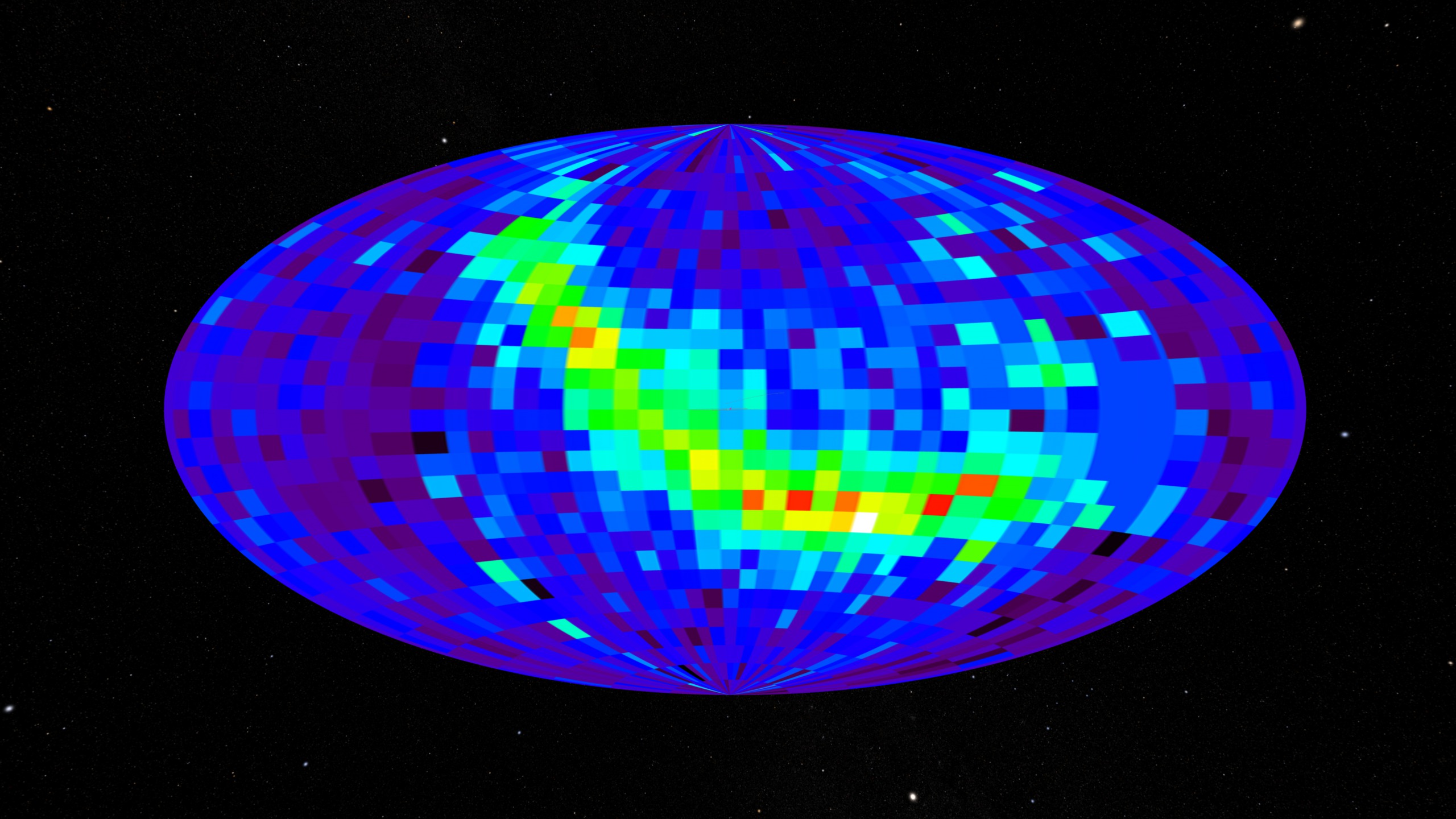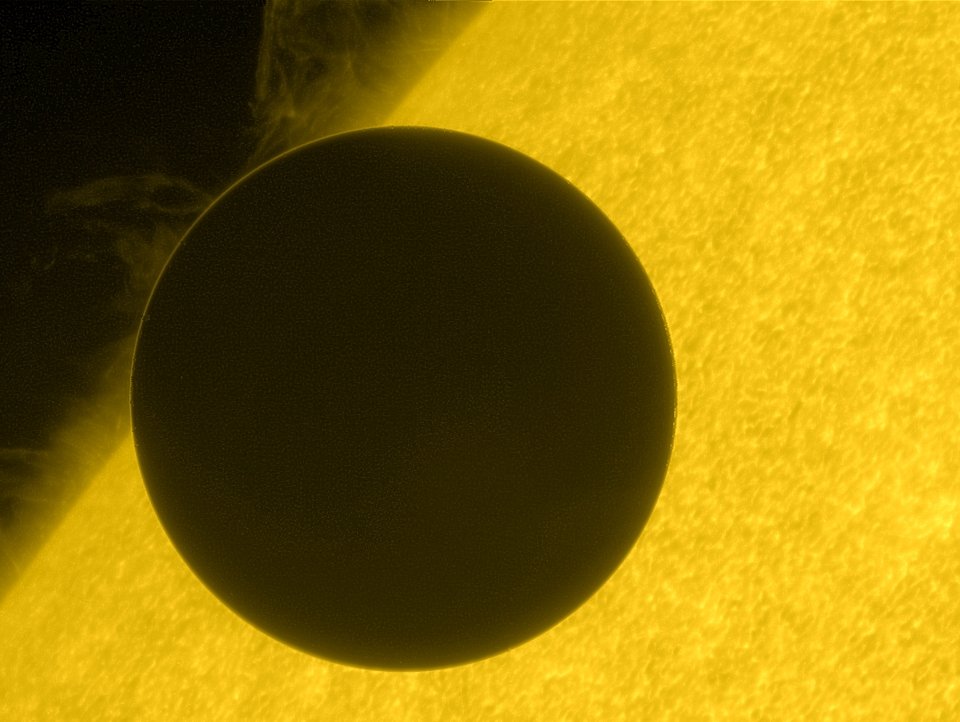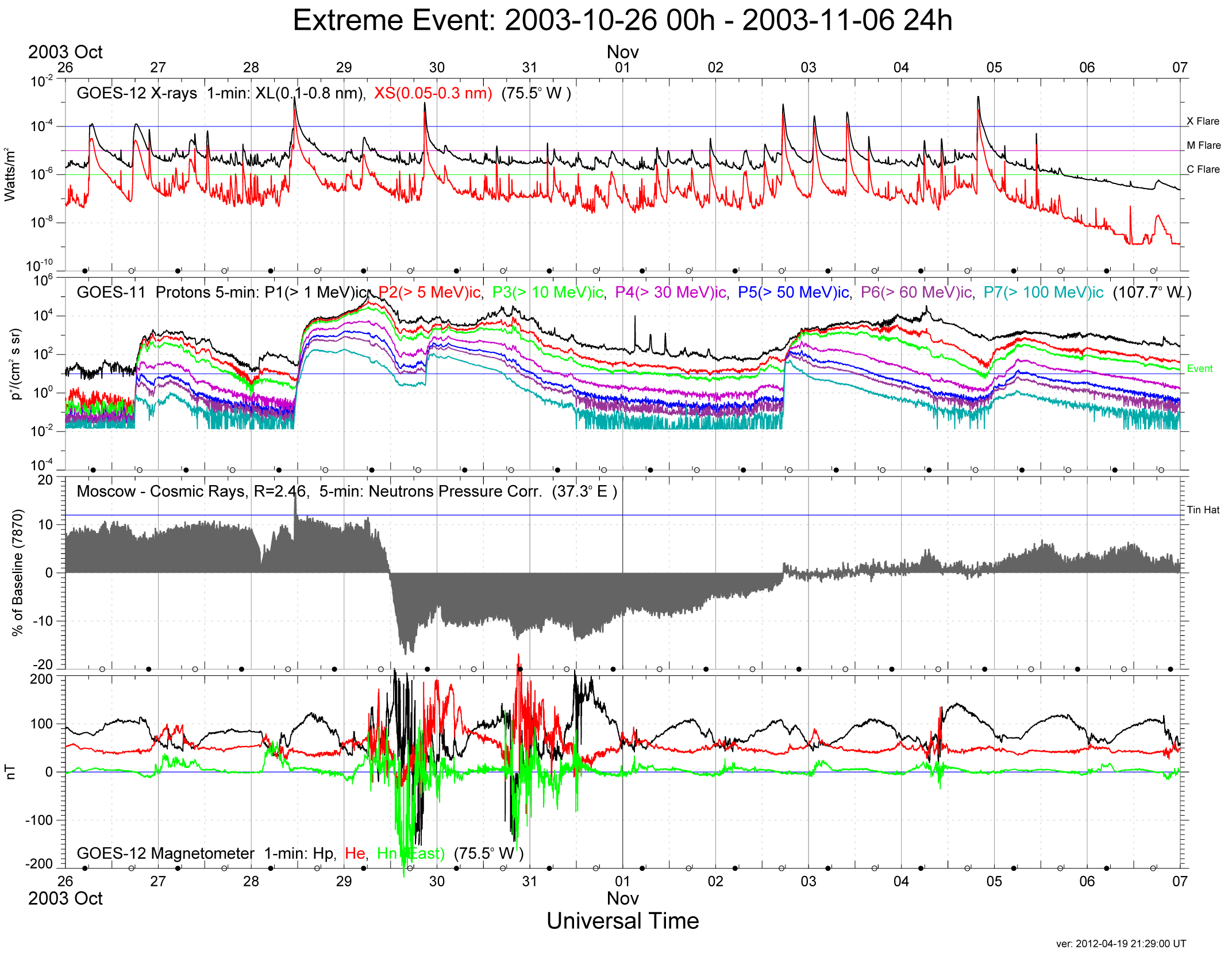|
Interstellar Mapping And Acceleration Probe
The Interstellar Mapping and Acceleration Probe (IMAP) is a heliophysics mission that will simultaneously investigate two important and coupled science topics in the heliosphere: the acceleration of energetic particles and interaction of the solar wind with the local interstellar medium. These science topics are coupled because particles accelerated in the inner heliosphere play crucial roles in the outer heliospheric interaction. In 2018, NASA selected a team led by David J. McComas of Princeton University to implement the mission, which is currently planned to launch in February 2025. IMAP will be a Solar tracker, Sun-tracking spin-stabilized satellite in orbit about the Sun–Earth L1 Lagrange point with a science payload of ten instruments. IMAP will also continuously broadcast real-time in-situ data that can be used for space weather prediction. It is the fifth mission selected in the Solar Terrestrial Probes program, after TIMED, Hinode (satellite), Hinode, STEREO and Ma ... [...More Info...] [...Related Items...] OR: [Wikipedia] [Google] [Baidu] |
Heliosphere
The heliosphere is the magnetosphere, astrosphere and outermost atmospheric layer of the Sun. It takes the shape of a vast, bubble-like region of space. In plasma physics terms, it is the cavity formed by the Sun in the surrounding interstellar medium. The "bubble" of the heliosphere is continuously "inflated" by plasma originating from the Sun, known as the solar wind. Outside the heliosphere, this solar plasma gives way to the interstellar plasma permeating the Milky Way. As part of the interplanetary magnetic field, the heliosphere shields the Solar System from significant amounts of cosmic ionizing radiation; uncharged gamma rays are, however, not affected. Its name was likely coined by Alexander J. Dessler, who is credited with first use of the word in scientific literature in 1967. The scientific study of the heliosphere is heliophysics, which includes space weather and space climate. Flowing unimpeded through the Solar System for billions of kilometres, the solar wind ... [...More Info...] [...Related Items...] OR: [Wikipedia] [Google] [Baidu] |
Princeton University
Princeton University is a private university, private research university in Princeton, New Jersey. Founded in 1746 in Elizabeth, New Jersey, Elizabeth as the College of New Jersey, Princeton is the List of Colonial Colleges, fourth-oldest institution of higher education in the United States and one of the nine colonial colleges chartered before the American Revolution. It is one of the highest-ranked universities in the world. The institution moved to Newark, New Jersey, Newark in 1747, and then to the current site nine years later. It officially became a university in 1896 and was subsequently renamed Princeton University. It is a member of the Ivy League. The university is governed by the Trustees of Princeton University and has an endowment of $37.7 billion, the largest List of colleges and universities in the United States by endowment, endowment per student in the United States. Princeton provides undergraduate education, undergraduate and graduate education, graduate in ... [...More Info...] [...Related Items...] OR: [Wikipedia] [Google] [Baidu] |
Supernova Remnants
A supernova remnant (SNR) is the structure resulting from the explosion of a star in a supernova. The supernova remnant is bounded by an expanding shock wave, and consists of ejected material expanding from the explosion, and the interstellar material it sweeps up and shocks along the way. There are two common routes to a supernova: either a massive star may run out of fuel, ceasing to generate fusion energy in its core, and collapsing inward under the force of its own gravity to form a neutron star or a black hole; or a white dwarf star may accrete material from a companion star until it reaches a critical mass and undergoes a thermonuclear explosion. In either case, the resulting supernova explosion expels much or all of the stellar material with velocities as much as 10% the speed of light (or approximately 30,000 km/s). These speeds are highly supersonic, so a strong shock wave forms ahead of the ejecta. That heats the upstream plasma up to temperatures well above milli ... [...More Info...] [...Related Items...] OR: [Wikipedia] [Google] [Baidu] |
Neutron Stars
A neutron star is the collapsed core of a massive supergiant star, which had a total mass of between 10 and 25 solar masses, possibly more if the star was especially metal-rich. Except for black holes and some hypothetical objects (e.g. white holes, quark stars, and strange stars), neutron stars are the smallest and densest currently known class of stellar objects. Neutron stars have a radius on the order of and a mass of about 1.4 solar masses. They result from the supernova explosion of a massive star, combined with gravitational collapse, that compresses the core past white dwarf star density to that of atomic nuclei. Once formed, they no longer actively generate heat, and cool over time; however, they may still evolve further through collision or accretion. Most of the basic models for these objects imply that neutron stars are composed almost entirely of neutrons (subatomic particles with no net electrical charge and with slightly larger mass than protons); the electron ... [...More Info...] [...Related Items...] OR: [Wikipedia] [Google] [Baidu] |
Black Holes
A black hole is a region of spacetime where gravity is so strong that nothing, including light or other electromagnetic waves, has enough energy to escape it. The theory of general relativity predicts that a sufficiently compact mass can deform spacetime to form a black hole. The boundary of no escape is called the event horizon. Although it has a great effect on the fate and circumstances of an object crossing it, it has no locally detectable features according to general relativity. In many ways, a black hole acts like an ideal black body, as it reflects no light. Moreover, quantum field theory in curved spacetime predicts that event horizons emit Hawking radiation, with the same spectrum as a black body of a temperature inversely proportional to its mass. This temperature is of the order of billionths of a kelvin for stellar black holes, making it essentially impossible to observe directly. Objects whose gravitational fields are too strong for light to escape were first ... [...More Info...] [...Related Items...] OR: [Wikipedia] [Google] [Baidu] |
Magnetospheres
In astronomy and planetary science, a magnetosphere is a region of space surrounding an astronomical object in which charged particles are affected by that object's magnetic field. It is created by a celestial body with an active interior dynamo. In the space environment close to a planetary body, the magnetic field resembles a magnetic dipole. Farther out, field lines can be significantly distorted by the flow of electrically conducting plasma, as emitted from the Sun (i.e., the solar wind) or a nearby star. Planets having active magnetospheres, like the Earth, are capable of mitigating or blocking the effects of solar radiation or cosmic radiation, that also protects all living organisms from potentially detrimental and dangerous consequences. This is studied under the specialized scientific subjects of plasma physics, space physics and aeronomy. History Study of Earth's magnetosphere began in 1600, when William Gilbert discovered that the magnetic field on the surface of ... [...More Info...] [...Related Items...] OR: [Wikipedia] [Google] [Baidu] |
Stars
A star is an astronomical object comprising a luminous spheroid of plasma held together by its gravity. The nearest star to Earth is the Sun. Many other stars are visible to the naked eye at night, but their immense distances from Earth make them appear as fixed points of light. The most prominent stars have been categorised into constellations and asterisms, and many of the brightest stars have proper names. Astronomers have assembled star catalogues that identify the known stars and provide standardized stellar designations. The observable universe contains an estimated to stars. Only about 4,000 of these stars are visible to the naked eye, all within the Milky Way galaxy. A star's life begins with the gravitational collapse of a gaseous nebula of material composed primarily of hydrogen, along with helium and trace amounts of heavier elements. Its total mass is the main factor determining its evolution and eventual fate. A star shines for most of its active life du ... [...More Info...] [...Related Items...] OR: [Wikipedia] [Google] [Baidu] |
STEREO
Stereophonic sound, or more commonly stereo, is a method of sound reproduction that recreates a multi-directional, 3-dimensional audible perspective. This is usually achieved by using two independent audio channels through a configuration of two loudspeaker A loudspeaker (commonly referred to as a speaker or speaker driver) is an electroacoustic transducer that converts an electrical audio signal into a corresponding sound. A ''speaker system'', also often simply referred to as a "speaker" or " ...s (or stereo headphones) in such a way as to create the impression of sound heard from various directions, as in natural hearing. Because the multi-dimensional perspective is the crucial aspect, the term ''stereophonic'' also applies to systems with more than two channels or speakers such as quadraphonic and surround sound. Binaural recording, Binaural sound systems are also ''stereophonic''. Stereo sound has been in common use since the 1970s in entertainment media such ... [...More Info...] [...Related Items...] OR: [Wikipedia] [Google] [Baidu] |
Hinode (satellite)
Hinode (; ja, ひので, , Sunrise), formerly Solar-B, is a Japan Aerospace Exploration Agency Solar mission with United States and United Kingdom collaboration. It is the follow-up to the Yohkoh (Solar-A) mission and it was launched on the final flight of the M-V rocket from Uchinoura Space Center, Japan on 22 September 2006 at 21:36 UTC (23 September, 06:36 JST). Initial orbit was perigee height 280 km, apogee height 686 km, inclination 98.3 degrees. Then the satellite maneuvered to the quasi-circular sun-synchronous orbit over the day/night terminator, which allows near-continuous observation of the Sun. On 28 October 2006, the probe's instruments captured their first images. The data from Hinode are being downloaded to the Norwegian, terrestrial Svalsat station, operated by ''Kongsberg'' a few kilometres west of Longyearbyen, Svalbard. From there, data is transmitted by Telenor through a fibre-optic network to mainland Norway at Harstad, and on to data users ... [...More Info...] [...Related Items...] OR: [Wikipedia] [Google] [Baidu] |
TIMED
timed (time daemon) is an operating system program that maintains the system time in synchronization with time servers using the Time Synchronization Protocol (TSP) developed by Riccardo Gusella and Stefano Zatti. Gusella and Zatti had done earlier related work on their TEMPO algorithm. The Time Synchronization Protocol specification refers an election algorithm and a synchronization mechanism specified in other technical reports listed as "to appear". With the release of macOS High Sierra in 2017, timed in macOS has subsumed all time synchronization responsibilities including those of the former ntpd and timed. See also * Network Time Protocol (NTP) * Precision Time Protocol The Precision Time Protocol (PTP) is a protocol used to synchronize clocks throughout a computer network. On a local area network, it achieves clock accuracy in the sub-microsecond range, making it suitable for measurement and control systems. ... (IEEE 1588 PTP) References External links timed(8 ... [...More Info...] [...Related Items...] OR: [Wikipedia] [Google] [Baidu] |
Space Weather
Space weather is a branch of space physics and aeronomy, or heliophysics, concerned with the time varying conditions within the Solar System, including the solar wind, emphasizing the space surrounding the Earth, including conditions in the magnetosphere, ionosphere, thermosphere, and exosphere. Space weather is distinct from, but conceptually related to, the terrestrial weather of the atmosphere of Earth (troposphere and stratosphere). The term "space weather" was first used in the 1950s and came into common usage in the 1990s. Later, it was generalized to a " space climate" research discipline, which focuses on general behaviors of longer and larger-scale variabilities and effects. History For many centuries, the effects of space weather were noticed, but not understood. Displays of auroral light have long been observed at high latitudes. Genesis In 1724, George Graham reported that the needle of a magnetic compass was regularly deflected from magnetic north over the c ... [...More Info...] [...Related Items...] OR: [Wikipedia] [Google] [Baidu] |









